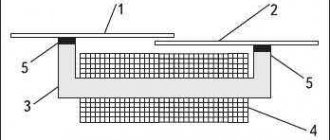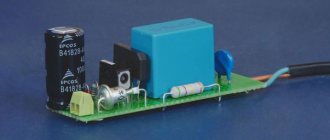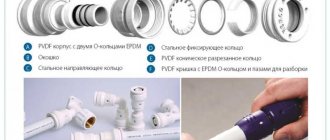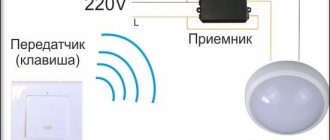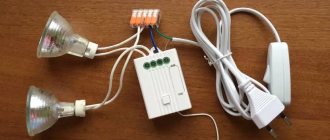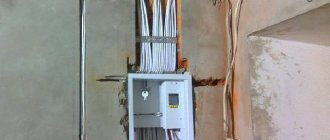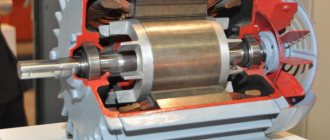Modern polymer materials used for the manufacture of pipes have practically replaced steel pipelines in households; when laying highways, special methods and technologies are used to change the configuration of the line and increase its length. The connecting coupling for pipes is designed for tight and durable mating of joints in straight sections; for effective operation, its technical characteristics must correspond to the parameters of the main line.
Unlike industrial connections using soldering, welding, flanges, the pipe coupling is most widely used in the installation of cold and hot water supply lines, sewerage, and heating in individual construction. Thanks to modern developments, it has become possible to lay communications from popular materials: cross-linked metal plastic (PE-X) and low-density polyethylene (HDPE) without the use of complex technical processes and specialized construction tools.
If you know the rules for installing pipeline systems, any homeowner can install a polymer pipeline with their own hands (with the exception of polypropylene, where soldering is required) using different types of fittings - this will save significant financial resources if necessary.
Rice. 1 Push coupling for pipes - appearance and design
Standards
Due to the importance of the unit for any system, the characteristics and application are regulated by GOSTs:
- GOST R 50371-92: Mechanical couplings for general machine-building applications. Terms and Definitions.
- GOST 15622-96: Friction safety clutches. Parameters, design and dimensions.
- GOST R 50893-96: Ball safety couplings. Basic parameters and dimensions. Technical requirements.
The documents include basic information on the parts under consideration with a description of groups and types, the principle of operation of each specific element.
Metal pipe connection
Metal pipe couplings are available for steel, cast iron and copper pipes. Let's look at each of these positions:
Coupling for steel pipes
This is a pipe element with a thread inside it. Such couplings are made from thick-walled steel billets or cast iron. The thread is cut on a lathe.
To connect pipes with such a coupling, it is necessary to weld welded joints (a section of pipe with a thread on one side) to the pipes themselves. The coupling is screwed onto the pipe to the middle of its length, then on the other side a second pipe is screwed into it, which is subsequently welded to the second pipe being connected.
When joining steel pipes in this way, it is very important to ensure the tightness of the connection, therefore, before screwing, you need to wrap a sealing material, for example, fum tape, onto the threads. To increase the tightness of the structure, it is recommended to install lock nuts on both sides, with which the coupling is clamped on both sides.
The only disadvantage of such a connection is the difficulty of disassembling the unit after long-term use. The threads on the coupling and on the pipes stick, and this connection becomes almost monolithic. You can open the connector if you warm up the joint well.
Coupling for cast iron pipes
The connection of cast iron pipes is made using the socket method and direct - in this case, a connecting coupling is required, which consists of:
- from the coupling itself;
- two clamps;
- two rubber cuffs that are installed inside the coupling;
- four bolts, with the help of which the clamps are pressed to the main element of the connecting structure.
Inside the coupling, right in the middle, there is a stop around the entire circumference, which provides boundaries for the installation of two pipe elements inside the device. Before assembly begins, the coupling is disassembled. First, it is put on one pipe until it stops, then another pipe is inserted into it, also until it stops. The tightness of the joint is ensured by cuffs installed along the edges of the coupling on the inner surface. Their internal diameter is smaller than the external diameter of the pipeline, which ensures a tight fit of the pipes.
Before the connection process begins, it is necessary to put one clamp on each pipe element. After joining, they are pressed tightly against the main part and tightened together with bolts.
Coupling for copper pipes
A compression coupling is used to connect copper pipes. It consists of a main element, a clamping nut, and a seal. The docking process is quite simple:
- A clamping nut is placed on the end of the pipe.
- A coupling is applied to the same end.
- An O-ring must be inserted between it and the pipe.
- Now screw the nut onto the coupling by hand, thereby pulling the latter to the ends of the pipeline.
- In order for the joint to be 100% tight, you need to tighten the nut with a wrench.
It's not worth making a big effort. A seal crushed under pressure will only reduce the tightness rating.
This connection has a number of disadvantages:
- It cannot be used in closed pipelines, because under the influence of vibrations the nut is slowly unscrewed, so it will need to be tightened periodically.
- Cannot be used in pipelines in which material moves under pressure.
- Not recommended for repeated use. The quality of the fitting decreases.
It should be noted that compression couplings are also used in connecting plastic pipes, mainly sewer pipes. The essence of the connection is the same, only some parts of the product differ.
Areas of application
Couplings are used to connect shafts. In this case, the following are eliminated:
- misalignment of shafts and the presence of distance between them;
- the presence of an angle between the axes of rotation;
- sharp blows and shocks in the operation of production machines.
The purpose of the coupling is to protect equipment. Using the device in a gearbox allows you to protect the unit from overload - if the mechanism jams, the cheaper coupling is destroyed. To transmit torque between shafts of different diameters, compensating types of devices are used.
An important function of the device is quick dismantling. If a part of the mechanical assembly needs to be serviced, the coupling can be easily removed. The serviced machine parts are quickly connected and are completely ready for use.
Cast iron and copper couplings
There are special fittings for connecting this type of pipeline, but installation in this case is quite complicated. Firstly, it is imperative to be able to get close to the pipe from each side, otherwise it is impossible to ensure the tightness of the joint. If the pipeline is laid near a wall, you will have to hollow out part of it near the connection point. Secondly, all work must be done very carefully and focused. It is highly advisable that the installation be carried out by an experienced person, since such work may not be possible for a beginner.
Installation is carried out as follows.
- First, the joint is sealed with bonding.
- The pipe is inserted into the fitting until it stops. This is necessary so that the seal does not fail.
- The bondage is being minted. This must be done in several turns and each turn must be minted around the entire circumference.
- After embossing, it is necessary to cover the joint with cement mortar.
You can also mint it with a simple screwdriver.
Important! Do not neglect the embossing of the seal. If you limit yourself to cement mortar, the connection will not last long. After some time it may leak.
Classification of couplings
There is a classification of couplings by design:
- managed;
- uncontrollable.
Interesting: Table of inch threads: designation in mm
And also by purpose:
- deaf (hard);
- compensating;
- elastic;
- coupling;
- automatic;
- magnetic and electromagnetic principles of operation.
Each type is used based on the specific operation of the unit.
Varieties by design
Design features distinguish the following types of couplings:
- Spring. Another name is a coupling with a serpentine spring. The device compensates well for sudden dynamic loads. It is a safety element, that is, it can collapse if there is excessive load on one of the shafts.
- Bush coupling. A rigid or blind bushing that connects the two ends of shafts. Minimally compensates for misalignment, has high strength and a low transmitted torque.
- Flange coupling. The connecting element is made of two parts in the form of flanges, mounted on the shaft shanks. It is assembled with bolts; to protect against overloads, bolts made of soft steel can be installed, which are cut off when overloaded on the drive. Transmits high torque.
- Elastic coupling with star. The design solution is a type of cam-disk mechanism. The working planes of the cams are divided by an elastic star.
- Elastic sleeve-finger coupling. The design of this coupling is made in the form of two coupling halves and static pins in one of them. There are rubber bushings on the fingers, which are the contact area of the fingers with the second coupling half.
- Coupling with toroidal shell. The main purpose of the device is components and assemblies with a high level of vibration and shock during operation. Perfectly compensates for radial displacement of shaft axes up to 5 mm.
The mechanical coupling has a long service life in the absence of peak loads on the equipment. It does not require maintenance. Before starting work, an audit inspection of the main couplings of the main production drives is carried out.
According to damping abilities
Damping mechanisms make it easier to overcome the resonant moment of a mechanical drive. Most often these are devices with elastic elements in the design. For example:
- flange type - elastic bushings;
- cam – star or gear made of dense plastic;
- spring type - a design in the form of a coil of a spring with a reinforced cross-section.
Interesting: Silumin - what kind of alloy is it and where is it used?
According to compensating abilities
Compensating links include elastic and rigid varieties. The purpose of the application is to eliminate shaft misalignment, and the elastic ones additionally smooth out sudden loads during startup. The most common examples are:
- cam;
- serrated.
Varieties by material
When used on pipeline lines, couplings act as repair and installation elements. Differ by material:
- For steel pipes, models without thread and with thread are used. Threaded connections are dismountable and can be repaired. Threads will be required on the two pipes being connected. Additional sealing is done using winding, sealant, and lock nut. Elements without threads require the installation of a one-piece plan by welding.
- For copper pipes, crimp threaded couplings and solder couplings are used. Soldered joints withstand high pressure and do not change their characteristics when the metal expands due to heat. The work uses a special flux, solder, and burner. Crimp couplings install faster, but due to the softness of copper as a non-ferrous metal, they can weaken over time.
- For cast iron pipes, crimp couplings with gaskets are widely used. The devices consist of two elements held together by bolts. Installation on the repaired area does not require welding, soldering or special skills. The selection is made for a specific pipeline diameter; a slight misalignment of the two ends of the pipe is possible.
- For plastic and polymer pipes, couplings made of similar materials are used. Installation depends on the specific model and involves soldering, crimping, and tightening like couplings for cast iron. For sewer pipes made of plastic, the couplings are fitted with a seal without additional fastening.
Connecting coupling for plastic pipes
Plastic products are widely used in individual construction and currently completely replace not only steel pipeline communications, but also many types of fittings, and for connecting HDPE in everyday life, plastic is the main component.
In a private house, a polymer pipeline made of cross-linked polyethylene and metal-plastic operates in heating systems, underfloor heating, hot and cold water supply. Ordinary polypropylene and its varieties (reinforced with fiberglass or PP-R aluminum) are widely used for heating and supplying hot and cold water to the house.
Internal sewage systems are installed from polyvinyl chloride (PVC) polymers, and outdoor sewer pipes (orange) are made from unplasticized polyvinyl chloride (UPVC).
Water pipes made of low-pressure polyethylene (HDPE pipes) are used to supply cold water to the house; in the industrial sector, polyethylene is a material for outdoor sewer lines and for laying gas lines.
In all the above examples, for domestic use, joining is carried out using couplings; special equipment is required for soldering polypropylene or installing press fittings.
Rice. 5 Compression coupling for HDPE pipes
Compression and press couplings for HDPE and metal-plastic PEX
HDPE pipes are used to organize individual water supply; they are used to supply water to a house from a well or a well, if the water intake is carried out by a submersible electric pump or station located in a caisson.
A solid line is laid underground without breaks, the water supply is connected only at the exit from the well and the entrance to the house, very often a polyethylene section is used as a pressure line and is connected to an electric pump, removed from the well head.
In all of the above cases, pipes are connected using plastic fittings; the peculiarities of their installation with a coupling are that they not only connect pipe sections, but also ensure their connection to the equipment.
Metal-plastic is also connected in a similar way, taking into account that a crimp connection on a union nut is not a very reliable method - a nut without a spring ring is subject to self-unscrewing and over time (after 5 - 7 years) a small leak may appear. Therefore, this technology is used only when the line is located externally in the area of visibility and direct access - if drops are detected at the junction, you can always tighten the nut.
Types of coupling connections
Any mechanical coupling connection is considered to be permanent and detachable. There is a classification by type.
Hard
Rigid links can be used if the axes being connected are exactly aligned, as well as with a slight deviation from the axis. In practice, an example of such a link is either a sleeve or flange device. The sleeve type can connect shafts up to 100 mm and transmit small torque. The flange type transmits higher torque and is used in powerful drives.
Interesting: DIY cold forging of metal
Elastic
Elastic devices dampen excess vibrations and dynamic overloads that arise during the operation of a mechanical unit. Excess energy is absorbed by the elastic element. In flange type devices, it is used as polymer bushings on studs. Cam devices have a star-shaped damper.
Coupling
It is rational to use clutch couplings in systems where it is necessary to periodically disconnect the driven and drive shafts. The first part of the coupling is attached to one shaft, and the second element slides along the axis of the other shaft. The connection occurs when two elements of the device engage. They are divided into the following types:
- gear - clutch with teeth or cams;
- frictional - the principle of operation is based on the force of friction;
- hydrodynamic - the driving force is transmitted by hydraulic fluid from the driving to the driven impeller;
- magnetic and electromagnetic - based on permanent or electromagnets. Will be discussed below.
Compensating
This type helps to eliminate the difference in shaft diameters, the displacement of their axes in the same plane or at an angle. They can be of elastic or rigid type.
Self-governing
Self-acting couplings disconnect and connect shafts when a certain torque is reached. Their use makes it possible to maintain normal operating conditions of components and assemblies in compliance with industrial safety standards. Are divided into:
- overtaking – direction of rotation;
- centrifugal – dependence on drive speed;
- safety - to control the amount of torque.
A little history about the hand muff
In fact, it’s no secret that the coupling is an accessory that has come to our time from the past. Designers love to take advantage of this fact, as it allows them to create original images.
Back in Italy, stylists of yesteryear came up with such a thing as a muff, which perfectly protected women's hands from the cold. To be more precise, back in Venice of the 14th century, representatives of the upper classes showed off with similar accessories in their hands, which greatly decorated the images of girls.
Thus, fur muffs have become an exquisite wardrobe element that shines with wealth and unique style. In fact, such an accessory can add a unique sophistication to absolutely any female look, if only due to the fact that designers create such accessories from natural and very expensive furs.
After the coupling gained its well-deserved popularity in Italy, representatives of other countries began to pay attention to it. It is worth noting that this very stylish accessory is very much loved by the French. So, even men can wear it, despite the fact that such a product was initially considered exclusively for women. So, today, you can see many portraits of prominent French men who wore hand muffs made of precious furs.
Even in those days, the muff testified to the high status and nobility of the family of its owner. Therefore, many representatives of great dynasties did not deny themselves such a pleasant and very attractive accessory. On top of everything else, the hand muff looked great with the clothing of the era, creating very strong and formal outfits.
After the coupling became widespread in Europe, it began to be noticed in Russia. Here high-ranking officials could afford it. A hand muff is not just a winter accessory, but a real work of art that deserves special attention from women.

